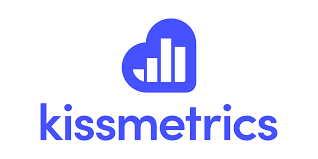Choosing the right marketing analytics tool is like picking your best mate for a cross-country road trip. You want someone (or something) that understands your vibe, keeps up with your pace, and, most importantly, helps you reach your destination successfully. In the digital marketing world, that road trip is your journey to achieving your business goals, and your potential mates? HubSpot Marketing Analytics and Kissmetrics.
Both platforms have their fanbase, their strengths, and areas where they could do a bit better. So, let’s dive into an area that’s crucial for every marketer out there: user experience and ease of use. Because, let’s face it, the best tool is the one you actually enjoy using.
| HubSpot Marketing Analytics | Kissmetrics |
|---|---|
 |  |
| G2 Score – 4.4 out of 5 stars | G2 Score – 4.1 out of 5 stars |
| TrustRadius Score – 8.5 out of 10 | TrustRadius Score – 9.6 out of 10 |
User Experience and Ease of Use
The Feel of The Wheel: Navigating HubSpot
HubSpot is like that friendly, intuitive, high-tech car with automated features that almost make driving a breeze. It’s designed for marketers of all levels, from beginners to seasoned pros. When you log into HubSpot, you’re greeted with a dashboard that’s as welcoming as your favorite coffee shop. Everything you need is right there: your analytics, your content, your leads. It’s like HubSpot is saying, “Don’t worry, I’ve got this.”
Navigating through HubSpot’s Marketing Analytics is as straightforward as it gets. The platform does an excellent job of guiding you through its comprehensive suite of tools. Whether you’re looking to dive deep into your website’s performance, track your email marketing campaigns, or analyze your sales funnel, HubSpot lays it all out in an organized, accessible manner. For beginners, this can feel like a godsend. You’re not bombarded with complex terminology or cluttered interfaces. Instead, you’re presented with clear, actionable insights.
The Kissmetrics Journey: Precision Driving
Kissmetrics, on the other hand, feels more like that sports car designed for drivers who love the thrill of precision and detail. It’s a tool built with a clear focus on providing deep, actionable insights into customer behavior. When you step into the Kissmetrics environment, you’re stepping into a world of detailed analytics that’s both powerful and precise.
The platform specializes in tracking individual visitor behavior across your site and tying that data back to real people. This level of detail is fantastic for marketers focused on optimizing the customer journey and improving conversion rates. However, this precision comes with a bit of a learning curve. The dashboard and reporting tools in Kissmetrics are thorough but can initially feel overwhelming to new users or those not used to drilling down into data at such a granular level.
Kissmetrics doesn’t hold your hand the same way HubSpot does. Instead, it challenges you to dive deep, think critically, and really understand your data. For data-driven marketers who love to geek out over metrics, Kissmetrics is exhilarating. But for those who prefer a more guided, simplified analytics experience, it might take a bit of getting used to.
Who’s Driving Your Marketing Forward?
The decision between HubSpot and Kissmetrics often boils down to your personal preference in navigating the vast world of marketing analytics. Do you prefer the intuitive, comprehensive approach of HubSpot, where everything is designed to make your marketing efforts as streamlined as possible? Or do you thrive on the detailed, granular insights that Kissmetrics offers, allowing you to fine-tune every aspect of the customer experience?
For many, HubSpot’s user-friendly interface and broad suite of tools make it the go-to choice for managing a wide range of marketing activities under one roof. Its ease of use means you can spend more time implementing strategies and less time figuring out how to access the data you need.
Kissmetrics, with its deep analytical capabilities, is perfect for those who already have a handle on the basics of marketing analytics and want to dive deeper into what makes their customers tick. It’s for marketers who see data as the starting point of every campaign and are comfortable navigating through numbers to unearth insights that drive decisions.
So, who should you choose for your marketing analytics partner? It ultimately depends on where you are in your marketing journey and how you like to drive your strategy. Both HubSpot and Kissmetrics offer powerful insights, but they cater to different types of drivers on the marketing highway.
Data Collection and Integration Capabilities
In the digital marketing landscape, data is the fuel that powers your journey towards achieving your goals. But not all analytics tools collect and manage this fuel in the same way. Let’s look under the hood of HubSpot and Kissmetrics to understand their data collection and integration capabilities.
HubSpot’s All-in-One Platform
HubSpot acts like a multifunctional fuel station, offering a variety of services beyond just filling up your tank. It’s designed to be the heart of your marketing efforts, providing not only analytics but also tools for content management, social media marketing, lead generation, and more. This integrated approach means that HubSpot collects a wide range of data from different channels, offering a holistic view of your marketing efforts.
One of HubSpot’s biggest strengths is its ability to seamlessly integrate with a wide array of tools and platforms. Whether it’s your CRM system, email marketing software, social media platforms, or customer service tools, HubSpot likely has a way to connect to it. This integration capability is a massive plus for marketers looking to centralize their data. When everything flows into one platform, it’s easier to see the big picture, identify trends, and make informed decisions.
However, the all-in-one nature of HubSpot might sometimes feel limiting to businesses that require more specialized data analysis. While it offers a broad overview and decent depth in its analytics, companies with very specific data needs might find certain metrics or reports lacking.
Kissmetrics’ Deep Dive Data Approach
Kissmetrics, focusing more narrowly on analytics and customer behavior, collects data with a laser focus on understanding every touchpoint in the customer’s journey. This tool digs deep into the specifics of user interaction, tracking individual user sessions, conversion paths, and much more. It’s like having a microscope that allows you to zoom in on the minutiae of how users interact with your website or product.
The power of Kissmetrics lies in its ability to provide detailed insights into customer behavior and conversion optimization. It’s exceptionally good at tracking across multiple devices and sessions, giving you a cohesive view of a customer’s journey, even if they switch from mobile to desktop or take several days to make a purchase.
Integration-wise, Kissmetrics also offers connections to other tools, but its ecosystem is not as vast as HubSpot’s. The focus here is more on depth than breadth. For businesses that rely heavily on e-commerce, SaaS, or other models where understanding the nuances of user behavior is critical, Kissmetrics integrates well with platforms that support these detailed analyses.
Choosing Your Navigation System
When deciding between HubSpot and Kissmetrics based on data collection and integration capabilities, consider your primary needs. If you’re looking for an all-encompassing solution that offers a broad view of your marketing activities and integrates with a wide range of tools, HubSpot might be your best bet. Its strength lies in its ability to provide a comprehensive marketing suite that caters to most of your needs in one place.
On the other hand, if your focus is on understanding the intricacies of how users interact with your site and converting those insights into actionable strategies, Kissmetrics could be the superior choice. Its detailed analytics and focus on customer behavior make it a powerful tool for businesses that prioritize depth over breadth.
Ultimately, your choice might also depend on the stage of growth your business is in and the specific challenges you face. Smaller businesses or those just starting with analytics might appreciate HubSpot’s user-friendly interface and broader approach. In contrast, more mature businesses or those with a significant online presence might find Kissmetrics’ detailed analyses invaluable.
Integration Capabilities: The Crossroads of Functionality
In today’s digital marketing landscape, the ability of a marketing analytics tool to integrate with other software is akin to having a well-connected network of roads on a road trip. It’s all about how easily you can move from one point to another, bringing all your necessary gear (or data) with you. Let’s explore how HubSpot and Kissmetrics perform when it comes to integrating with other digital tools, a factor that can significantly impact your marketing efficiency and effectiveness.
HubSpot: The Central Hub of Connections
Imagine HubSpot as a bustling train station, where different train lines (software applications) converge. It’s designed to be the central hub for your marketing, sales, and service activities. One of HubSpot’s strongest selling points is its extensive ecosystem of integrations. From CRM systems and email marketing platforms to social media tools and customer service software, HubSpot offers a seamless connection with a wide array of tools you’re likely already using.
HubSpot’s integrations are designed with the non-technical user in mind, meaning you don’t need to be a developer to connect your tools and start seeing your data flow from one application to another. This ease of integration extends the functionality of your marketing suite, enabling you to automate processes, enhance customer relationship management, and gather insights across different channels without the need for manual data transfer or complex setups.
Kissmetrics: Specialized Routes for the Data-Driven Traveler
Kissmetrics, akin to a specialized tour service, offers integrations that are highly focused on analytics and customer behavior tracking. While its list of direct integrations might not be as extensive as HubSpot’s, Kissmetrics focuses on quality over quantity, ensuring that the available integrations add significant value to your data analysis efforts.
Integrating Kissmetrics with other platforms allows for a deep dive into customer behavior and conversion tracking. This means you can link Kissmetrics’ powerful analytics with tools like email marketing platforms, A/B testing tools, and e-commerce systems to understand the impact of your marketing strategies at a granular level. Although setting up these integrations might require a bit more technical know-how compared to HubSpot, the payoff is in the depth of insights you can achieve.
Navigating the Integration Highway
When choosing between HubSpot and Kissmetrics based on integration capabilities, consider the nature of your marketing ecosystem. If you’re looking for a tool that serves as a jack-of-all-trades, connecting easily with a broad range of applications for a more holistic view of your marketing efforts, HubSpot is your go-to. Its user-friendly approach to integrations makes it a versatile choice for businesses looking to streamline their marketing processes across various platforms.
On the other hand, if your journey leans more towards specialized analytics and you’re focused on understanding every nuance of customer behavior and conversion, Kissmetrics’ integrations, though fewer, provide the depth of data necessary to make informed decisions. For teams with the technical capability to manage more complex integrations, Kissmetrics offers a powerful complement to your existing tools, allowing for sophisticated analysis and targeting.
The choice between HubSpot and Kissmetrics, in terms of integration capabilities, ultimately hinges on the complexity of your marketing stack and the depth of analytics you need. HubSpot’s broad compatibility makes it an ideal central hub for most businesses, while Kissmetrics offers specialized routes for those who are deeply invested in data-driven marketing strategies.

Related: Check out our free SEO suite

Customer Support and Learning Resources: Navigating Through Challenges
Embarking on a journey with a marketing analytics tool can have its share of challenges and roadblocks. Whether it’s a technical glitch, a feature you’re not sure how to use, or a strategy you’re looking to optimize, having access to robust customer support and comprehensive learning resources is like having a reliable GPS and a well-informed co-pilot. Let’s see how HubSpot and Kissmetrics stack up in providing support and guidance to their users.
HubSpot: A Journey With Full Support
HubSpot shines brightly in this area, akin to traveling on a well-lit, well-signposted highway. The platform is renowned for its exceptional customer support and a wealth of learning resources. Users can access a variety of support channels, including 24/7 live chat, email support, and phone support, ensuring help is always on hand, regardless of your time zone or the complexity of your query.
Beyond direct support, HubSpot Academy stands out as a treasure trove of educational content. From comprehensive courses and certifications to webinars and detailed guides, the Academy is designed to not only solve immediate problems but also to educate users on best practices and advanced marketing strategies. Whether you’re a complete beginner or looking to master complex marketing techniques, HubSpot’s resources are structured to facilitate continuous learning and improvement.
Kissmetrics: The Path of the Self-Starter
Kissmetrics takes a slightly different route, reminiscent of a journey through a rugged terrain that demands a bit of self-reliance. The platform offers standard support channels such as email and live chat, which are competent and responsive. However, where it takes a divergent path is in the scale and accessibility of its educational resources.
Kissmetrics provides a focused set of learning materials, including a knowledge base, how-to articles, and blog posts that dive deep into analytics and data-driven marketing. While these resources are valuable and informative, they are more suited to users who have a clear understanding of what they’re looking for or who have specific questions about the platform’s functionality.
Choosing Your Travel Companion
When it comes to customer support and learning resources, the choice between HubSpot and Kissmetrics might boil down to your preferred style of learning and the level of support you anticipate needing.
HubSpot is like a guided tour, offering a high level of support and an extensive array of learning resources designed to cater to users at all levels. This makes it an excellent choice for businesses that value ongoing education and may require varied levels of support as they grow and evolve.
Kissmetrics, while providing solid support, is better suited for those who prefer to explore on their own, armed with detailed, targeted resources. It’s ideal for users who feel confident in navigating analytics tools and are looking for in-depth insights on specific topics rather than a broad educational program.
Both platforms offer valuable support and resources, but your preference might depend on how much guidance you desire on your journey through marketing analytics. Whether you prefer the comprehensive support and educational ecosystem of HubSpot or the focused, self-directed learning approach of Kissmetrics, both paths lead to enhanced marketing strategies and deeper insights into your campaigns.
Pricing and Value for Money: Charting the Cost of Your Journey
In the realm of marketing analytics tools, the pricing structure and the value you get for your investment are akin to planning the budget for a long road trip. It’s not just about the upfront cost of gas; it’s also about the efficiency and experiences you gain along the way. Let’s navigate through the pricing models of HubSpot Marketing Analytics and Kissmetrics to understand which tool offers the best value for your marketing dollar.
| HubSpot Marketing Analytics | HubSpot’s pricing varies by package, with the Marketing Hub starting at $45 per month for the Starter package, $800 per month for the Professional package, and $3,600 per month for the Enterprise package. |
| Kissmetrics | As of the latest information, Kissmetrics appears to have been absorbed by Neil Patel Digital, and specific pricing for Kissmetrics services is not listed. It’s advisable to contact them directly for details. |
HubSpot: A Flexible Journey With Scalable Expenses
HubSpot’s pricing model is like a road trip that you can start with a modest budget, with room to scale up as you venture further. The platform operates on a tiered pricing structure, which ranges from a free plan with basic features to more advanced plans that cater to larger businesses with more complex needs. This scalability makes HubSpot an attractive option for businesses of all sizes, from startups to large enterprises.
The free version of HubSpot includes basic CRM features, email marketing, and analytics, which is a great starting point for small businesses or those just beginning their marketing journey. As you need more advanced features, like marketing automation, custom reporting, and additional analytics capabilities, you can move up to the paid plans. Each tier adds more features and capacity, allowing businesses to pay for only what they need at each stage of their growth.
One of the key advantages of HubSpot’s pricing model is its transparency. Costs are clearly outlined on their website, with no hidden fees, making it easier for businesses to plan their marketing budgets. However, as you add more features and require more capacity, the price can climb quite significantly, so it’s important to closely assess which features are essential to your marketing strategy to ensure you’re getting the best value.
Kissmetrics: Investing in Precision
Kissmetrics, on the other hand, is like embarking on a specialized tour where you pay for the unique insights and precision tracking it offers. The platform is primarily geared towards medium to large businesses or those for whom deep customer behavior analytics are critical. Its pricing reflects the advanced capabilities it provides, with plans that cater to businesses ready to invest in high-level analytics.
Unlike HubSpot, Kissmetrics does not offer a free plan, emphasizing its focus on providing comprehensive analytics solutions right from the start. Pricing for Kissmetrics is based on the volume of events tracked and the number of engagements, making it a more significant investment, especially for high-traffic sites.
Kissmetrics’ pricing can be seen as an investment in understanding your customers at a granular level, with the expectation that the insights gained will drive significant improvements in conversion rates and customer retention. The platform is less about marketing breadth and more about marketing depth, making its value proposition centered on the quality and impact of the analytics it provides.
Evaluating the Return on Investment
When assessing the pricing and value for money between HubSpot and Kissmetrics, it’s crucial to consider your business’s specific needs and how each platform’s features align with those needs. HubSpot offers a broad suite of marketing tools with a flexible pricing model that can grow with your business, making it a cost-effective choice for a wide range of companies. Its value shines through in its ability to consolidate multiple marketing functions into a single platform, potentially reducing the need for additional software.
Kissmetrics, with its focus on detailed customer analytics, is more of a niche investment. For businesses that rely heavily on understanding detailed customer behaviors and optimizing their marketing efforts accordingly, the insights provided by Kissmetrics can justify the higher cost. It’s about investing in quality data that can lead to targeted improvements and higher returns.
Choosing the right tool depends on your marketing focus, the stage of your business, and how much you value depth versus breadth in your analytics. Both HubSpot and Kissmetrics offer significant value, but the best choice for you will depend on the specific outcomes you’re looking to achieve with your marketing budget.
Reporting Capabilities: Mapping the Success of Your Journey
In any marketing journey, the ability to clearly map out and understand your progress is crucial. This is where the reporting capabilities of your chosen marketing analytics tool become your compass and map, providing insights into your marketing efforts’ effectiveness, guiding decisions, and strategy adjustments. Let’s explore how HubSpot and Kissmetrics stack up in terms of reporting capabilities, to see which tool might better help you chart your course to success.
HubSpot: A Comprehensive View from Above
HubSpot’s reporting capabilities are like having a satellite view of your entire marketing landscape. The platform offers a comprehensive range of reporting options that cover virtually every aspect of your digital marketing efforts. From website analytics and email marketing performance to social media engagement and sales funnel metrics, HubSpot provides a holistic overview of your marketing activities.
One of the standout features of HubSpot’s reporting is its customizable dashboard. You can tailor this dashboard to highlight the metrics that matter most to you, ensuring you have immediate access to the data you need to make informed decisions. Whether you’re focused on lead generation, customer acquisition, or analyzing the performance of specific marketing channels, HubSpot’s dashboards and reports are designed to be flexible and user-friendly.
Moreover, HubSpot excels in visual data presentation, making it easier for you to digest complex data at a glance. This visual approach, combined with the ability to generate detailed reports on specific aspects of your marketing efforts, ensures that you can not only track your progress but also share and communicate your results effectively with team members and stakeholders.
Kissmetrics: The Navigator’s Tool for Detailed Exploration
While HubSpot offers a bird’s-eye view, Kissmetrics provides the tools for a detailed exploration of the customer journey. It excels in delivering deep insights into how users interact with your website and products, tracking every step of the customer’s journey from the first visit through conversion and beyond. This level of detail is particularly valuable for businesses focused on optimizing their funnels and improving conversion rates.
Kissmetrics’ reporting capabilities allow you to drill down into the data, identifying patterns, trends, and bottlenecks in your user’s journey. The platform’s strength lies in its ability to link data directly to individual users, offering a granular view of customer behavior that generic analytics tools might miss. This enables you to create highly targeted marketing strategies and personalize your approach to meet your audience’s needs more effectively.
Additionally, Kissmetrics offers robust segmentation options, allowing you to slice and dice your data based on various criteria. This capability ensures that you can tailor your analysis and reports to specific segments of your audience, providing actionable insights that can lead to more effective engagement strategies.
Charting Your Course with the Right Reporting Tools
The decision between HubSpot and Kissmetrics for reporting capabilities ultimately hinges on the depth of insight you require and the aspects of your marketing strategy you wish to monitor and analyze. HubSpot offers a broad, user-friendly reporting system that suits businesses looking for an integrated view of their marketing efforts across multiple channels. Its customizable dashboards and visual data presentation make it an excellent tool for monitoring overall performance and sharing insights across teams.
Kissmetrics, with its focus on detailed customer behavior tracking and conversion funnel analysis, is ideal for businesses that prioritize deep analytical insights into how individual users interact with their brand. Its advanced segmentation and individual user tracking capabilities offer a level of detail that can significantly impact decision-making for those focused on optimization and personalization.
Both tools offer powerful reporting capabilities, but the best choice depends on your specific needs: whether you’re looking for a comprehensive overview or deep, actionable insights into customer behavior. Understanding the type of data that will most inform your marketing decisions is key to selecting the right tool to map the success of your journey.
Conclusion
Deciding between HubSpot Marketing Analytics and Kissmetrics boils down to understanding your unique marketing needs, preferences, and goals. If you’re after a user-friendly platform that offers a wide range of integrations and comprehensive support, alongside a flexible pricing model that caters to businesses of all sizes, HubSpot could be your highway to success. Its strength lies in its ability to provide a broad overview of your marketing efforts, making it an ideal choice for those who value simplicity and scalability.
On the flip side, if your journey requires deep dives into customer behavior analytics, with a focus on precision and detailed insights that can directly impact conversion rates and customer engagement, Kissmetrics stands out as the specialized tool designed for data-driven marketers. While it may come with a steeper learning curve and a higher price point, the investment could well be worth it for businesses that prioritize depth over breadth in their analytics approach.
Ultimately, the choice between HubSpot and Kissmetrics is not just about selecting a marketing analytics tool; it’s about choosing a partner for your marketing journey. Consider your route, your passengers, and your destination, and you’ll find the tool that not only fits your current needs but also supports your growth along the way.
Read Next:
- Measuring User Engagement through Time on Page with SEO Analytic
- Utilizing SEO Analytics to Optimize Startup Mobile-Friendly Design
- Startup Guide to Identifying Crawl Errors in Google Search Console
- SEO Analytics Startup Influencer Marketing: Tracking Impact
- 31+ Top Social Media Management tools Compared! (2023)





















Comments are closed.